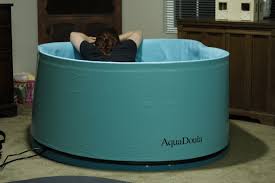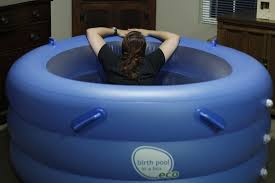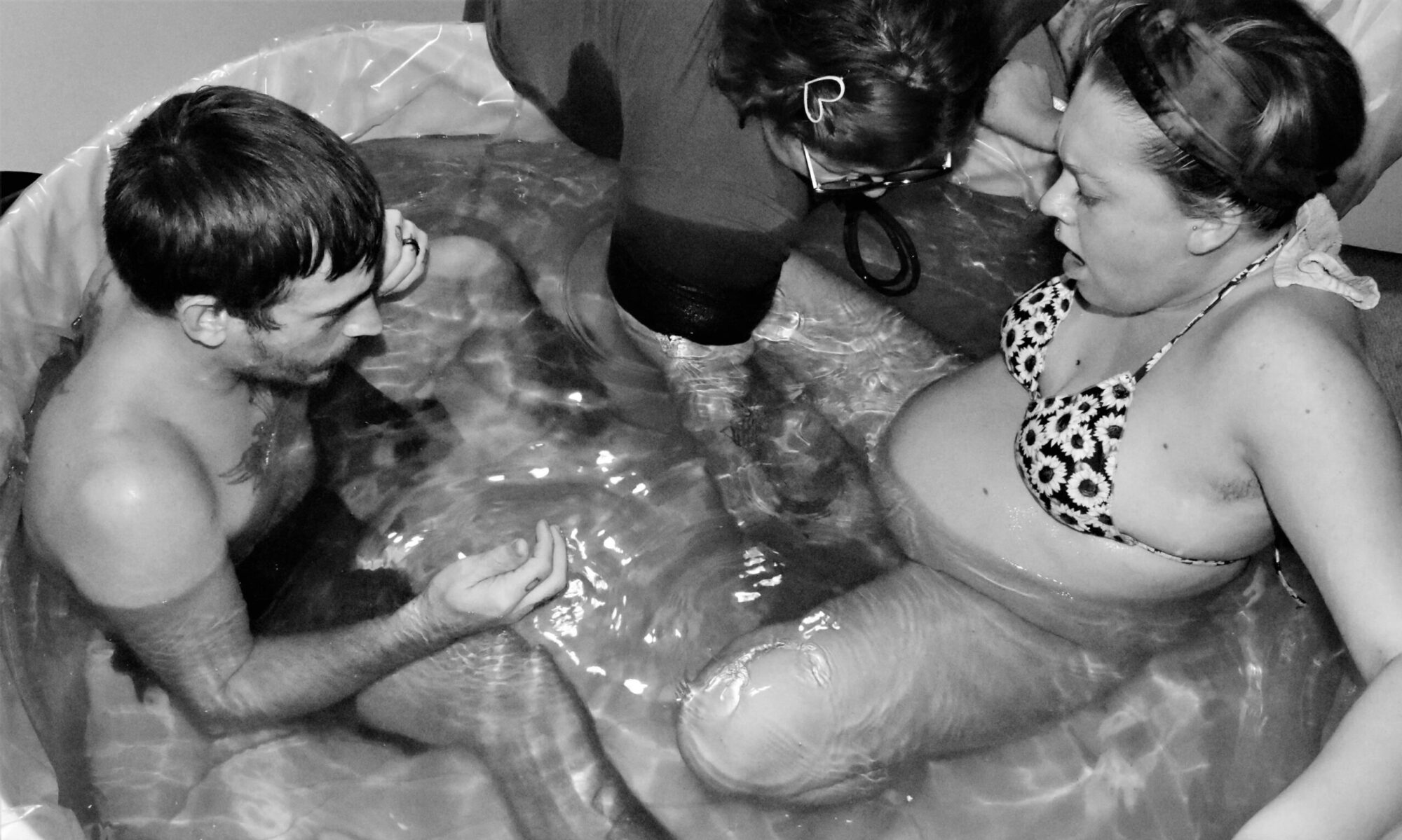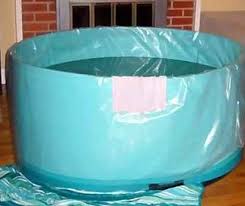

Click the picture below to view Home4Birth’s video on Setting up the AquaDoula birth tub:
Over half of our homebirth clients choose to use water for labor and/or birth. We have birth tubs available for use at your homebirth with a Midwife.
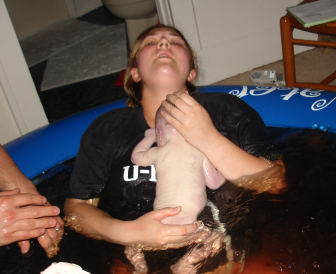
Some of the reasons many of our families choose to labor and birth in the water are:
- The ahh… effect (water is soothing and provides comfort to many.)
- As buoyancy increases, the weight of the body is decreased
- It’s easier to change positions and remain upright during labor and birth
- The tub provides a “nest”; a birth place that is secluded and private
- In women with high blood pressure, water birth can lower the blood pressure by up to 10 points
- Baby is born gently, from water into water
- Water promotes more efficient uterine contractions by causing Mom to release a surge of oxytocin
- Water relaxes the pelvic floor muscles
- Water provides counter pressure against the perineum during pushing to help decrease tearing in first time mothers
- The moisture in the air helps women not be dried out with the deep breathing of labor
- Bacteria is dissipated in water reducing the transmission of infection (like group B strep)
- There is room in the tub for both Mom and her partner
Below is some information about why babies don’t attempt breathing while underwater. Excerpted with permission, from an article by Barbara Harper titled “Waterbirth Basics”

“There are several factors that prevent a baby from inhaling water at the time of the birth. These inhibitory factors are normally present in all newborns. The baby in utero is oxygenated through the umbilical cord via the placenta, but practices for future air breathing by moving his intercostals muscles and diaphragm in a regular and rhythmic pattern from about 10 weeks gestation on. The lung fluids that are present are produced in the lungs and are similar chemically to gastric fluids. These fluids come out into the mouth and are normally swallowed by the fetus. There is very little inspiration of amniotic fluid in utero. 24-48 hours before the onset of spontaneous labor the fetus experiences a notable increase in the Prostaglandin E2 levels from the placenta which cause a slowing down or stopping of the fetal breathing movements (FBM). With the work of the musculature of the diaphragm and intercostals muscles suspended, there is more blood flow to vital organs, including the brain. You can see the decrease in FBM on a biophysical profile, as you normally see the fetus moving these muscles about forty percent of the time. When the baby is born and the Prostaglandin level is still high, the baby’s muscles for breathing simply don’t work, thus engaging the first inhibitory response.

A second inhibitory response is the fact that babies are born experiencing acute hypoxia or lack of oxygen. It is a built in response to the birth process. Hypoxia causes apnea and swallowing, not breathing or gasping. If the fetus were experiencing severe and prolonged lack of oxygen, it may then gasp as soon as it were born, possibly inhaling water into the lungs. If the baby were in trouble during the labor, there would be wide variabilities noted in the fetal heart rate usually resulting in the prolonged bradycardia, which would cause the practitioner to ask the mother to leave the bath prior to the babies birth.”
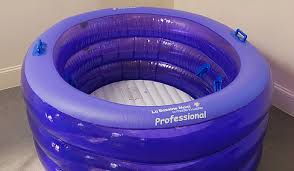 “One more factor that most people do not consider, but is vital to the whole waterbirth and aspiration issue is the fact that water is a hypotonic solution and lung fluids present in the fetus are hypertonic. So, even if water were to travel in past the larynx, they could not pass into the lungs based on the fact that hypertonic solutions are denser and prevent hypotonic solutions from merging or coming into their presence.
“One more factor that most people do not consider, but is vital to the whole waterbirth and aspiration issue is the fact that water is a hypotonic solution and lung fluids present in the fetus are hypertonic. So, even if water were to travel in past the larynx, they could not pass into the lungs based on the fact that hypertonic solutions are denser and prevent hypotonic solutions from merging or coming into their presence.
The last important inhibitory factor is the Dive Reflex and revolves around the larynx. The larynx is covered all over with chemoreceptors or taste buds. The larynx has five times as many taste buds as the whole surface of the tongue. So when a solution hits the back of the throat, passing into the larynx, the taste buds interprets what substance it is and the glottis automatically closes and the solution is then swallowed not inhaled. God built this autonomic relax into all newborns to assist with breastfeeding and it is present until about the age of 6-8 months when it mysteriously disappears.”
We have several birth tubs in our practice available for our clients to check out or others to rent. The majority are AquaDoula birth tubs and the rest are a combination of Birth Pool in a Box and La Bassine Professionals.
